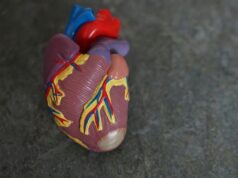
Jenny Bjerre outlines the results of a study presented at the European Society of Cardiology Congress (ESC 2019; 31 August–4 September, Paris, France) which examined the information on driving restrictions provided to patients following implantable cardioverter defibrillator (ICD) therapy, and whether they adhere to them.
Due to the risk of arrhythmias and syncope, patients who have been fitted with an implantable cardioverter defibrillator (ICD) are restricted on when they are allowed to resume driving following implantation and appropriate ICD therapy. However, it is not known whether they are aware of these driving restrictions, and whether they adhere to them.
According to the current recommendations of the European Society of Cardiology, patients with a primary prevention ICD can resume driving four weeks after ICD implantation; secondary prevention ICD patients and patients who experience appropriate ICD therapy have to wait three months. All professional driving and driving of vehicles >3,500kg is permanently restricted.1 These limitations may lead to significant impacts on the daily lives of patients. For truck drivers and other professional drivers in particular, the restrictions have an immediate bearing on their ability to maintain employment. Even for private drivers, getting to work and other daily activities, such as grocery shopping or visiting friends and family, are impeded. Therefore, it is not surprising that ICD patients do not adhere to these restrictions. But the magnitude of, and reason for non-adherence, remains unknown.
We aimed to provide updated evidence on this topic and designed a specific questionnaire to investigate the information given on the driving restrictions following ICD implantation and ICD shock; whether the ICD patients adhere to the driving restrictions; and, lastly, which factors are associated with non-adherence.2 Through Danish nationwide registries, we were able to identify all living patients implanted with an ICD in the years 2013–2016, and link the patient-reported questionnaire results with register data on comorbidities, pharmacotherapy, and socioeconomic status.
The questionnaire was distributed to 3,913 ICD patients in the spring of 2017 and achieved a response rate of 70%. Almost all (92%) held a valid driver’s license at the time of ICD implantation, and 7% were actively using a professional driver’s license during the six months prior to implantation. Only 42% of primary prevention patients, 63% of secondary prevention patients, and 72% of patients who experienced an appropriate ICD shock recalled being informed of any driving restrictions.
Importantly, only 45% of professional drivers recalled being informed about specific professional driving restrictions. We also found that more than 30% of the patients resumed driving during the restricted periods: 34% of primary prevention patients resumed driving within one week (the recommended abstinence period in Denmark), 43% of secondary prevention patients within three months, and 30% of patients who had experienced an appropriate ICD shock were driving within three months after the shock. Professional driving had been resumed by 35%.
The patients who returned to driving within the restricted periods were less likely to report having received information about driving restrictions. In a multiple logistic regression model, non-adherence was likewise predicted by reporting non-receipt of information about driving restrictions (odds ratio [OR] 3.34), as well as male sex (OR 1.53), age 60 years (OR 1.2), receipt of a secondary prevention ICD (OR 2.2), and being the only driver in the household (OR 1.29). Income level, employment status, and pre-implantation driving habits did not reach significance.
Firstly, our study confirms that doctor-patient communication is difficult: up to almost 60% of patients reported they had not been informed about any restrictions for driving following ICD implantation.
Even taking into account potential recall bias, these numbers are still too high. Naturally, patients do not remember everything they are told, and if you have recently survived a cardiac arrest, driving restrictions might not be your biggest concern. But better communication is required—for example, by repeating the information, explaining the rationale behind the restrictions, and including family members in the discussions.
In Denmark, patients receive written information about life after an ICD implantation. The driving restrictions are discussed in these brochures. But we need to acknowledge that there is no guarantee the patients read and understand the information provided. The findings for professional drivers are particularly worrisome. In Denmark, we need to be better at identifying patients with licenses for vehicles >3,500kg or professional transportation, including those who might not be using the license for their primary employment.
Secondly, non-adherence to the driving restrictions was common. Unsurprisingly, not having received information was the largest predictor of non-adherence, and this gives us a lot of potential for improvement. Nevertheless, we also found that some ICD patients who recalled being informed chose to drive anyway. These patients’ behaviour is likely more difficult to change. From a previous qualitative study on the topic,3 the lack of consequences for driving while restricted was one important reason for non-adherence. Some ICD patients who cannot do without their vehicle for their daily activities simply take the chance and drive. According to our results, physicians should be especially aware of male patients, secondary prevention patients, those >60 years, and patients who are the only driver in their household.
Lastly, since driving restrictions have the potential to significantly impede the daily lives of ICD patients and limit their personal freedom, we believe we need more evidence on the absolute risk of traffic accidents in this patient population, and thus on the necessity of the driving restrictions.
References
1. Vijgen J, Botto G, Camm J, et al. Consensus statement of the European Heart Rhythm Association: updated recommendations for driving by patients with implantable cardioverter defibrillators. Europace 2009; 11: 1097–107.
2. Bjerre J, Rosenkranz SH, Christensen AM, et al. Driving following defibrillator implantation: development and pilot results from a nationwide questionnaire. BMC Cardiovascular Disorders 2018; 18: 212.
3. Bjerre J, Mørk SR, Mielke A, et al. Abstract 15698: Driving restrictions following defibrillator implantation: The patient’s perspective. Circulation 2017; 136: A15698-A.
Jenny Bjerre is at the Copenhagen Cardiovascular Research Centre, Herlev and Gentofte Hospital, University of Copenhagen, Copenhagen, Denmark.









